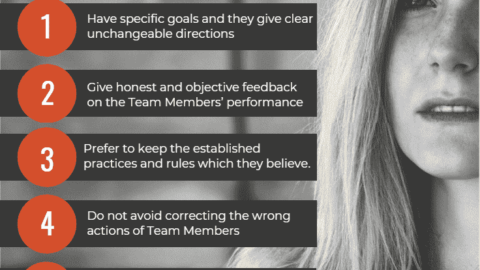Situational Leadership Style: Looking at the Fiedler Contingency Model
No matter what industry you’re in, there’s one defining factor that leads to indisputable success: great leadership style. Thus, great leadership is what turns startups into multi-billion-dollar companies and what helps multi-national conglomerates continue to stay at the top of the food chain. Great leaders don’t keep the status quo: they seek higher levels of success by enabling the people they lead. One of the most common questions in the world of leadership is a simple one: what’s the best types of leadership styles? So, should you be a friendly, personable leader that people love to work for? Someone who gets down in the trenches with your team? Or a delegator who puts people in positions to succeed?
Table of Contents
The fact is, there’s no wrong answer. The “right” answer depends on the situation, according to the Fiedler Contingency Model. This time-tested, tried-and-true leadership model says that you can embody the style that comes most naturally to you, so long as you know how to apply it to a wide variety of situations.
The Fiedler Contingency Model
Created by personality scientist Fred Fiedler in the 1960s, the Fiedler Contingency Model offers a simple premise: there is no one “best” style of leadership. Instead, your efficacy as a leader comes from two critical factors: leadership style and situational control.
- Leadership style is the ability to recognize your traits as a leader, and to understand how others respond to those traits. Therefore, this is a quantifiable exercise, measured using something called the Least-Preferred Coworker (LPC) Scale. The results of the LPC scale tell a leader if they’re “relationship oriented” or “task oriented” in their leadership style.
- Situational control is how your leadership style relates to different situations. For example, in a “leader-member relations” situation a relationship-oriented leader may affect more natural trust from their team by virtue of their ability to connect on a personal level. Conversely, a “task structure” situation that requires you to delegate may come more naturally to a task-oriented leader.
By understanding your natural tendencies as a leader and the types of situations where you’re at an advantage or a disadvantage, you can adapt accordingly. In essence, this is the true mark of a great leader: the ability to recognize where they excel and where they need to compensate.
Relationship-Oriented Leadership Style
Firstly, scoring above 73 on the LPC scale makes you a relationship-oriented leader among the leadership style. You’re the kind of leader who connects with your team and empowers them through emotional connection. Subordinates trust you—whether you go to bat for them in a bad situation or get down in the trenches when the going gets rough. This camaraderie puts you in a position to motivate and inspire with ease.
The drawbacks to a relationship-oriented leadership approach? If your team doesn’t have that trust in you, you’re less equipped to motivate and inspire them. However, attempts to connect will be more difficult and you could find yourself in a position where morale suffers. In these situations, relationship-oriented leaders need to pivot. Look for “earn trust” opportunities and ingratiate yourself with subordinates through authenticity.
Task-Oriented Leadership Style
Scoring below a 54 on the LPC scale makes you a task-oriented leadership style. These individuals tend to focus on the task at hand, and see their role as a leader through the lens of problem-solving. These leaders are well-equipped to assess the situation and make decisions that put individuals in positions to succeed, which not only accomplishes the task, but also boosts morale. Task-oriented leaders prefer structure and order.
The chief challenge task-oriented leaders face is that of perception. Over-delegating can come off as a relentless pursuit for perfection. Moreover, subordinates may not feel like they’re getting the personal support they need from a leader if everything is viewed through the lens of problem-solving. The solution? Task-oriented leaders need to remember the human element as they solve for success.
The Middle Ground
Between 54 and 73 on the LPC scale is a middle-ground that, unfortunately, Fiedler’s Contingency Model doesn’t define well. Ironically, it’s where many up-and-coming executives find themselves while they cut their teeth at the management level. They have traits of both relationship- and task-oriented leaders, but aren’t heavily favored one way or the other.
If you find yourself in this group, embrace situational awareness. When looking at a problem or opportunity, ask: what type of leadership style is best-suited for this situation? The ability to take a more personal approach or a task-specific approach through simple assessment makes you a chameleon: someone well-positioned to live up to the expectations of the situation. Just make sure you’re embracing leadership qualities in a natural way. The only thing worse than failing to adapt as a leader is trying to lead from an inauthentic position. “Fake it ‘till you make it” isn’t a motto good leaders embrace.
Embody Your Personal Best Leadership Style
Fiedler’s Contingency Model was originally designed to help companies hire the right leader for a specific position. By identifying the dynamic of the position and pinpointing the ideal leadership style, companies could interview with a certain type of candidate in-mind. However, this model has since become one that effective leaders have embraced to better-understand their own tendencies.
One of the biggest criticisms of the model is that situations change and leaders need to adapt in-kind. Hiring a specific type of manager often backfired for companies as they outgrew certain circumstances. Instead, it became prudent to hire strong leaders who can adapt to situations. So, a leader who knows what they do well and how to compensate in situations outside of their wheelhouse are leaders to deliver success no matter what they experience.

Keith Brandon is a senior director of Keboth Training and Education Co. In addition to leading Keboth’s global team, he developed Keboth’s online training system that offers advanced learning solutions for professionals.










